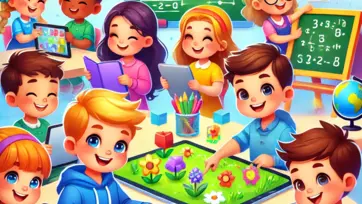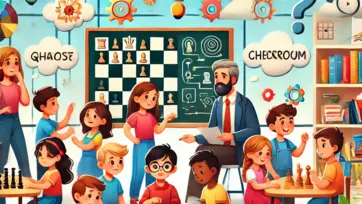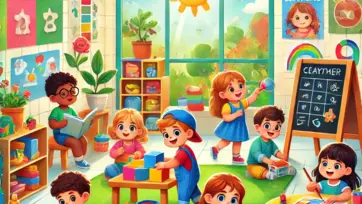Montessori education is a child-centered approach that emphasizes independence, hands-on learning, and self-directed activities. While many parents send their children to Montessori schools, it is entirely possible to incorporate Montessori principles into your home environment. This guide will provide you with simple yet effective ways to create a Montessori-inspired learning space and foster your child's natural curiosity and development.
1. Understanding Montessori Principles
Before implementing Montessori learning at home, it's essential to understand the core principles of this approach:
- Child-Led Learning: Children explore and learn at their own pace.
- Hands-On Activities: Emphasis on practical and sensory experiences.
- Prepared Environment: A well-organized and accessible learning space.
- Independence: Encouraging self-sufficiency in everyday tasks.
- Respect for the Child: Allowing children to make choices and develop confidence.
2. Setting Up a Montessori Learning Space
Creating a Montessori-inspired space at home helps children feel comfortable and encouraged to explore learning independently.
Tips for Setting Up the Space:
- Low Shelves: Use open shelves at child height for easy access to materials.
- Natural Materials: Incorporate wooden toys, baskets, and fabric items instead of plastic.
- Order and Simplicity: Keep learning areas clutter-free and organized.
- Defined Spaces: Designate areas for reading, art, practical life skills, and exploration.
- Child-Sized Furniture: Use chairs, tables, and tools appropriate for small hands.
3. Practical Life Activities
Practical life activities teach kids everyday skills and build confidence in their abilities.
Examples of Practical Life Activities:
- Pouring and Transferring: Using cups and spoons to move water, rice, or beans.
- Buttoning and Zipping: Practicing dressing skills on their own.
- Setting the Table: Encouraging responsibility and order.
- Sweeping and Cleaning: Teaching care for their environment.
- Preparing Snacks: Allowing kids to help with cutting bananas or spreading peanut butter.
4. Montessori Learning Materials
Montessori materials are designed to be self-correcting and sensory-based. While you can purchase official Montessori toys, many household items work just as well.
DIY Montessori Learning Materials:
- Sorting Activities: Using colored buttons, beads, or pasta for pattern recognition.
- Sensory Bins: Filling trays with rice, sand, or beans for tactile exploration.
- Letter Tracing: Writing letters in a tray of sand or flour.
- Counting Objects: Using beans, marbles, or pebbles to practice math concepts.
- Nature Exploration: Collecting leaves, rocks, or flowers for observation and classification.
5. Encouraging Independence
One of the most important aspects of Montessori education is allowing children to do things on their own.
Ways to Encourage Independence:
- Provide Choices: Let children choose between activities to develop decision-making skills.
- Use Step-by-Step Demonstrations: Show them how to do tasks rather than doing it for them.
- Allow Time for Self-Correction: Let them figure out mistakes without immediate intervention.
- Organize Their Belongings: Ensure clothes, toys, and books are within reach so they can manage their own space.
6. Montessori Reading and Language Development
Montessori reading activities focus on phonics, letter recognition, and storytelling.
Reading and Language Activities:
- Letter Sounds Games: Use sandpaper letters or flashcards to introduce phonetic sounds.
- Storytelling Time: Read aloud daily and encourage children to retell stories.
- Labeling Items: Place labels around the house to associate words with objects.
- Moveable Alphabet: Allow kids to create words using letter tiles.
- Writing Practice: Offer lined paper, crayons, and chalkboards for early writing.
7. Math the Montessori Way
Montessori math focuses on concrete learning before abstract concepts.
Montessori Math Activities:
- Number Beads: Using beads to count and group numbers.
- Counting Sticks: Arranging sticks or blocks to visualize numbers.
- Measuring and Comparing: Using measuring cups or rulers to explore sizes and lengths.
- Sorting and Patterning: Matching objects by shape, size, or color.
8. Science and Nature Exploration
Montessori emphasizes real-world exploration and hands-on science learning.
Simple Science Activities:
- Gardening: Planting seeds and watching them grow.
- Sink or Float Experiments: Testing objects in water.
- Animal Study: Observing insects, birds, and pets.
- Weather Tracking: Keeping a daily log of temperature and cloud patterns.
9. Art and Music in Montessori Learning
Creative expression is an essential part of a child’s development.
Montessori Art and Music Ideas:
- Painting and Drawing: Using simple, open-ended materials.
- Exploring Musical Instruments: Allowing kids to play with bells, xylophones, or drums.
- Nature Art: Using leaves, twigs, and stones to create art projects.
- Classical Music Time: Playing soft music to encourage listening and movement.
10. Cultivating a Love for Learning
Montessori learning at home is about fostering curiosity, independence, and a love for discovery.
Final Tips for Montessori Learning:
- Follow Your Child’s Interests: Let them guide their learning journey.
- Be Patient: Allow them to learn at their own pace.
- Create a Calm Environment: Minimize distractions and encourage focus.
- Celebrate Efforts: Encourage learning without pressure or competition.
Conclusion
Implementing Montessori learning at home doesn’t require a big budget or a dedicated classroom. With simple changes in the environment, hands-on activities, and a focus on independence, parents can create a rich, engaging learning experience for their children. By following Montessori principles, children can develop essential life skills while growing into confident and self-motivated learners.








